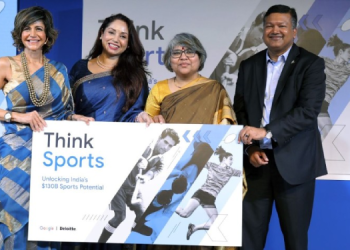Lessons from the 2019 global WARC Awards
WARC, the global authority on advertising and media effectiveness, has today released the Effective Content Strategy Report, outlining key trends and lessons in branded content strategies for advertisers, agencies and media owners,following an analysis of some of the world’s most effective campaigns.

Drawn from jury discussions and metadata of the shortlisted and winning entries of the Effective Content Strategy category of this year’s WARC Awards –a global search for next-generation marketing effectiveness –the report identifies three main content strategy themes that helped brands achieve business goals.
Lucy Aitken, Managing Editor, Case Studies,WARC, comments: “We’ve analysed the successful case studies to uncover the most important insights that marketers and their agencies can draw on to help plan their future content strategies.”
WARC’s Effective Content Strategy Report highlights three key themes:
Content needs to build audiences in the long term
Content needs to be a long-term play to attract and maintain audience attention. Mars-owned cat-care brand Whiskas, Lebanese telco Connect and Orange in Tunisia all enjoyed their second WARC Award for Effective Content Strategy in 2019 thanks to a long-term content strategy that is resonating with people and paying dividends for the brand.
Cécile Angrand, Global Brand Director, Whiskas and Diana Lopes, Strategy Director, AMV BBDO concur that: “Content should be seen as a long-term investment for brands… [it’s] a continuous process of building sustained attention for your brand. It’s not about reaching an audience, butabout building one.”
Younger audiences use branded content for self-expression
Younger audiences will make time for the right kind of branded content, and this was seen in winning campaigns such as Nescafé’s Egyptian campaign targeting university students, or Dunelm’s advertiser-funded programming pushin the United Kingdom that used a dating show format.
Thas Naseemuddeen, Chief Executive Officer and Riley Strand, Senior Strategist of independent creative agency Omelet, point out: “The intrinsic value of a product is less about what it says on the box and more about what it empowers you to say about yourself.”
They add: “Younger audiences are growing and shaping perspectives; they’re looking for friends, for romance, for purpose. They do that by expressing themselves through creation and communication, and brands can enable or improve their ability to do that.”
Real-world components help make content distinctive
A tangible part of a campaign – for instance,Panini Cards for Coca-Cola Egypt, Coffee Corners for Nescafé Dolce Gusto in MENA or Grand Prix-winning Trash Isles for Plastic Oceans International – can bring to life a content strategy.
Jury member Iuren Ramiro, Planning Manager, Santa Clara, comments: “Content can play a key role in making […] experiences more meaningful. However, brands need to be careful not to make digital their main or only piece of content strategy. ‘Things’ can also be an incredibly valuable way to connect brands with people, having the advantage of seamlessly becoming a part of their conversation.”
Summing up, Namita Mediratta, Global CMI Director, Content Centre of Excellence, Unilever and chair of the 2020 WARC Awards’Effective Content Strategy jury, says: “As advertising moves towardsa value-exchange model from a predominantly interruption-driven mindset, the role of content (asdistinct from advertising)becomes much more important.There is a crying need for content that people want to engage with,participate in and contribute to.”
A sample of the Effective Content Strategy Report, Lessons from the 2019 WARC Awards,can be downloaded here.

















